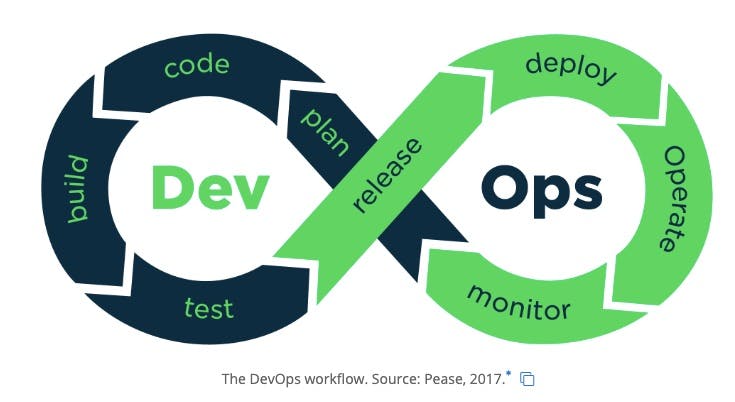How to build a product faster while maintaining its quality and improving it over time? What is the key?
Before discussing the solution, let’s first understand the traditional software development cycle.
For a long time, developers wrote code, quality assurance professionals ran elaborate test procedures, and the system administrators were responsible for product deployment and integration. The whole process often took a long time as there was limited interaction between these distinct silos. This was acceptable when the
DevOps: A Key Enabler for Agile Product Engineering?
Today, DevOps is one of the most discussed software development approaches. It’s a popular agile IT methodology for software product engineering that promotes frequent communication and ongoing, real-time collaboration between the development (Dev) & IT operations (Ops) teams. This approach replaces siloed development, helps reduce the software development lifecycle, and empowers the product engineering service providers to accelerate the product’s time to market.
Assessing the Need for this Agile IT Methodology:
There are five different stages of software product development: Planning & Product Design, Coding, Testing, Deployment, and Operations and Feedback Gathering. Each of the stages is handled by a dedicated team.
Without adequate and timely feedback, precise testing, and collaboration between these different IT teams, the overall development process can take time.
Consider a scenario: You have got a new product coming on new year’s eve. Given its theme, it has to be out on the 1st of January, or at least within the same week. It can’t be scheduled or released in February or the months after. However, it’s not feasible with multiple back & forth and long feedback in the traditional development cycle. For this reason, multiple products never finish on time. As per the
Comes DevOps to the Rescue:
By embracing DevOps, the IT enterprises gain three core advantages that wouldn’t exist otherwise; they are:
- Higher Speed and Quality Product Release: With continuous delivery (CD) introduction in the development cycle, making software products becomes easy. As it helps encourage faster feedback, allowing developers to fix bugs in the system in the early stages.
- Enhanced Customer Experience: It’s important to be responsive to consumer needs in today’s dynamic marketplace to provide an improved experience. A DevOps team is well equipped to react to change requests. As a result, accelerating the time-to-market with reliable releases and customer satisfaction.**
** - Better & Coherent Working Environment: The real-time collaboration between different stakeholders orchestrated through the principles and practices of DevOps helps speed up the process and increase the productivity and agility of the development team.
A
These benefits perhaps give an overview that DevOps isn’t merely a set of practices to enable agile product engineering, but rather a superior work culture that can be assessed with the help of CAMS. Invented by Damon Edwards and John Willis, the authors of the famous Podcast DevOps Cafe, CAMS stands for Culture, Automation, Measurement, and Sharing.
Understanding the DevOps Lifecycle in Detail:
DevOps lifecycle can be considered an amalgamation of different phases of continuous software development (Continuous Delivery), integration, testing, deployment, and monitoring.
-
Agile Planning: Notwithstanding the traditional planning and product designing stage, agile planning organizes work in short iterations, though detailed, to enhance the number of releases. This initial detailed agile planning allows for flexibility once the coding is initially tested.
-
Continuous Development: By breaking down the work into smaller chunks or portions, the team can deliver better and faster results. Developers commit code in small chunks so that a tester can easily verify and test it.
-
Continuous Automated Testing: Leveraging automation tools like Selenium, Ranorex, Appium, TestComplete, etc., a quality assurance team tests and discover bugs and vulnerabilities (if any). So that they can quickly be shared with the engineering team. The automated procedure records the feedback and helps the team keep a track of changes, modifications, or upgrades.
-
Continuous Integration and Continuous Delivery (CI//CD): One of the most critical stages in the DevOps lifecycle, continuous delivery, as discussed before, merges development, testing, and deployment operations, thereby streamlining the whole process. It helps enable the automatic delivery of code updates into a production environment.
-
Continuous Deployment: At this stage, the code gets deployed to run in production on a public server. By making it accessible for multiple users, you get a chance to test and verify new features early. Some of the most prominent tools used are Chef, Pepper, and Azure Resource Manager, among others.
-
Continuous Monitoring: The last and final stage is about assessing the whole cycle— analyzing the team's feedback, reporting inaccuracies, and improving functioning.
Final Word- Who is the Winner?
With DevOps, you’re creating a culture of continuous improvement, automating everything, and trying to bring value to the customer as soon as possible. So, whether it’s the software development enterprise, the employees working in the organization (product engineering team), customers, or the end-users, different stakeholders benefit from the “DevOps” methodology.


